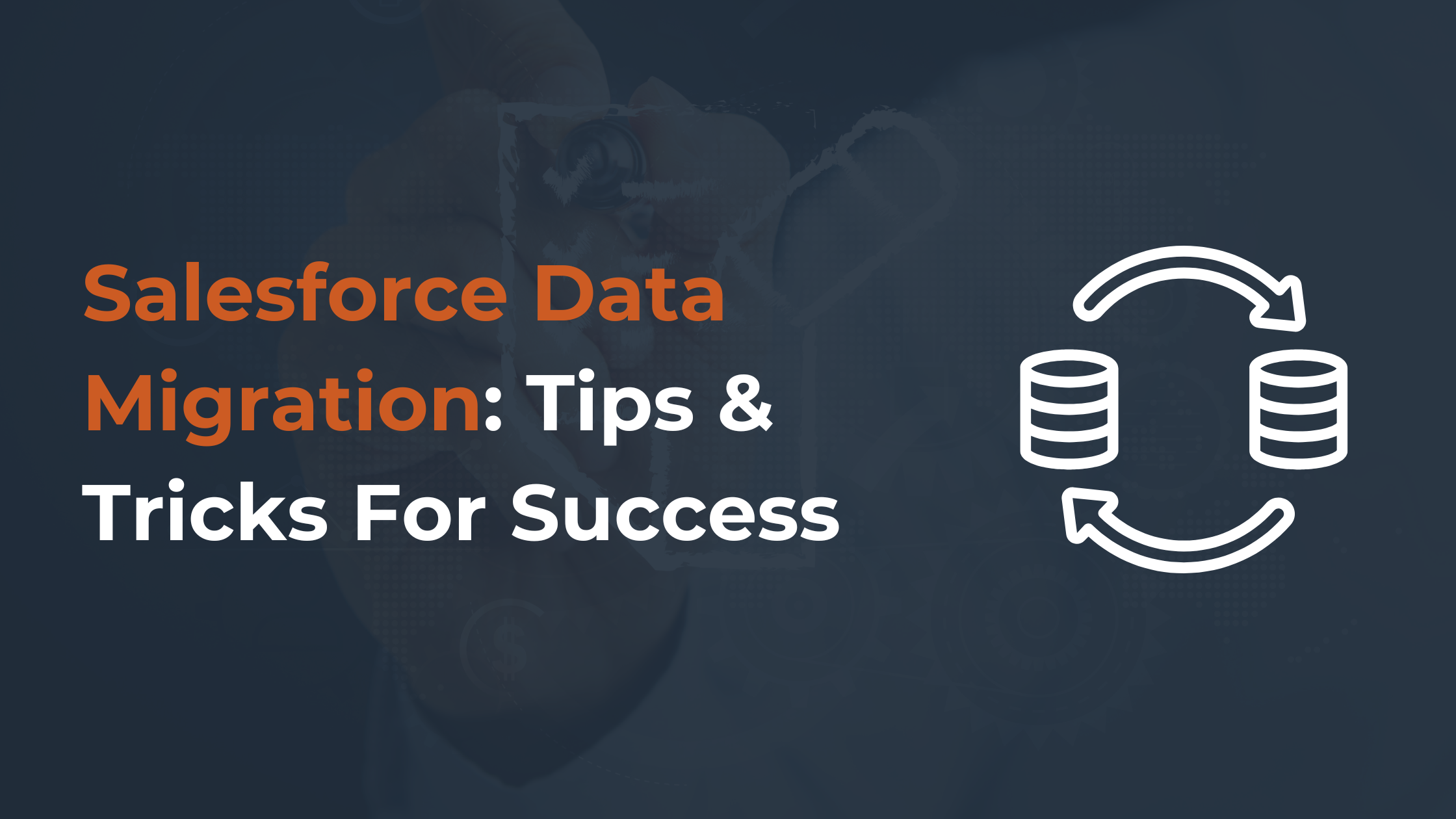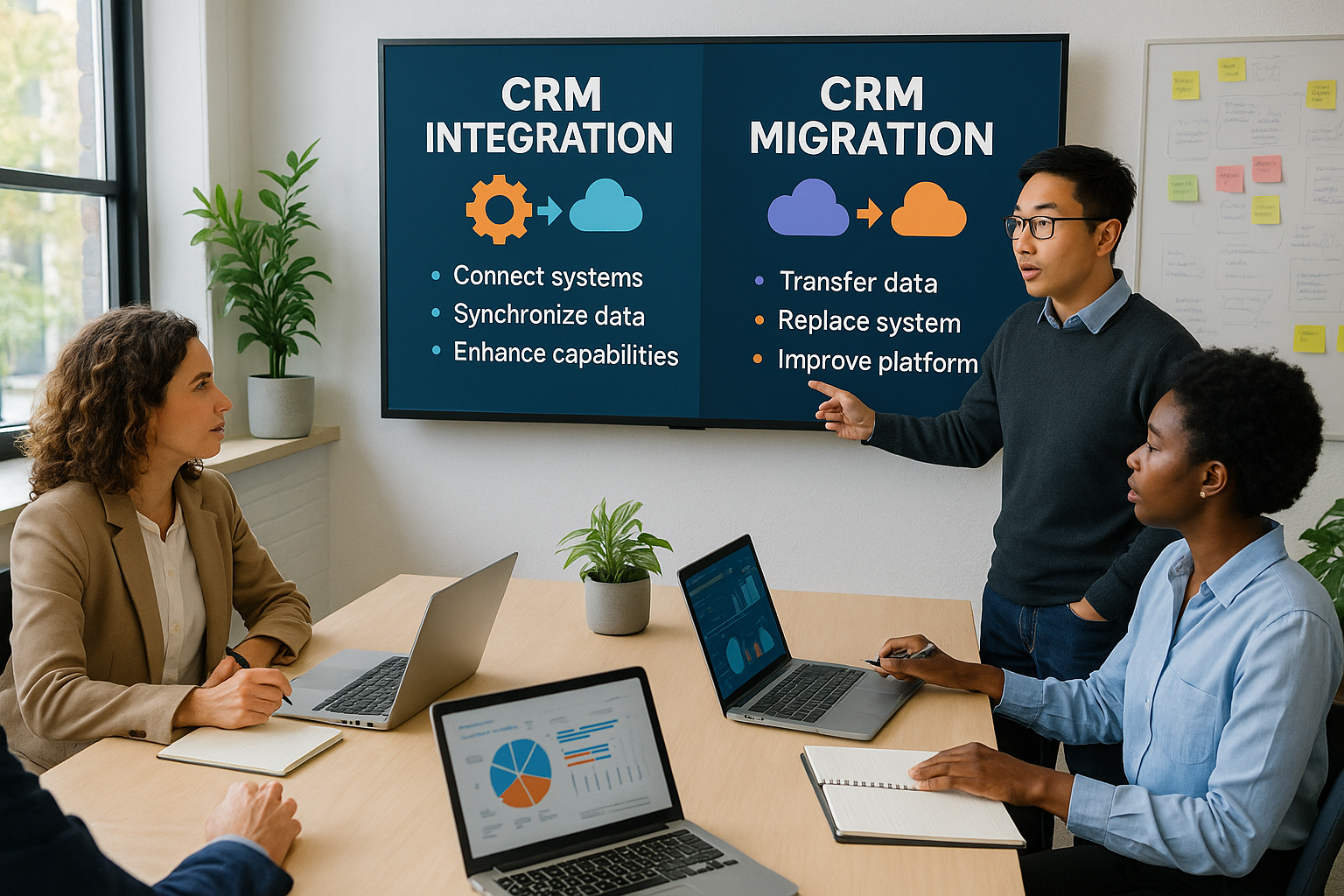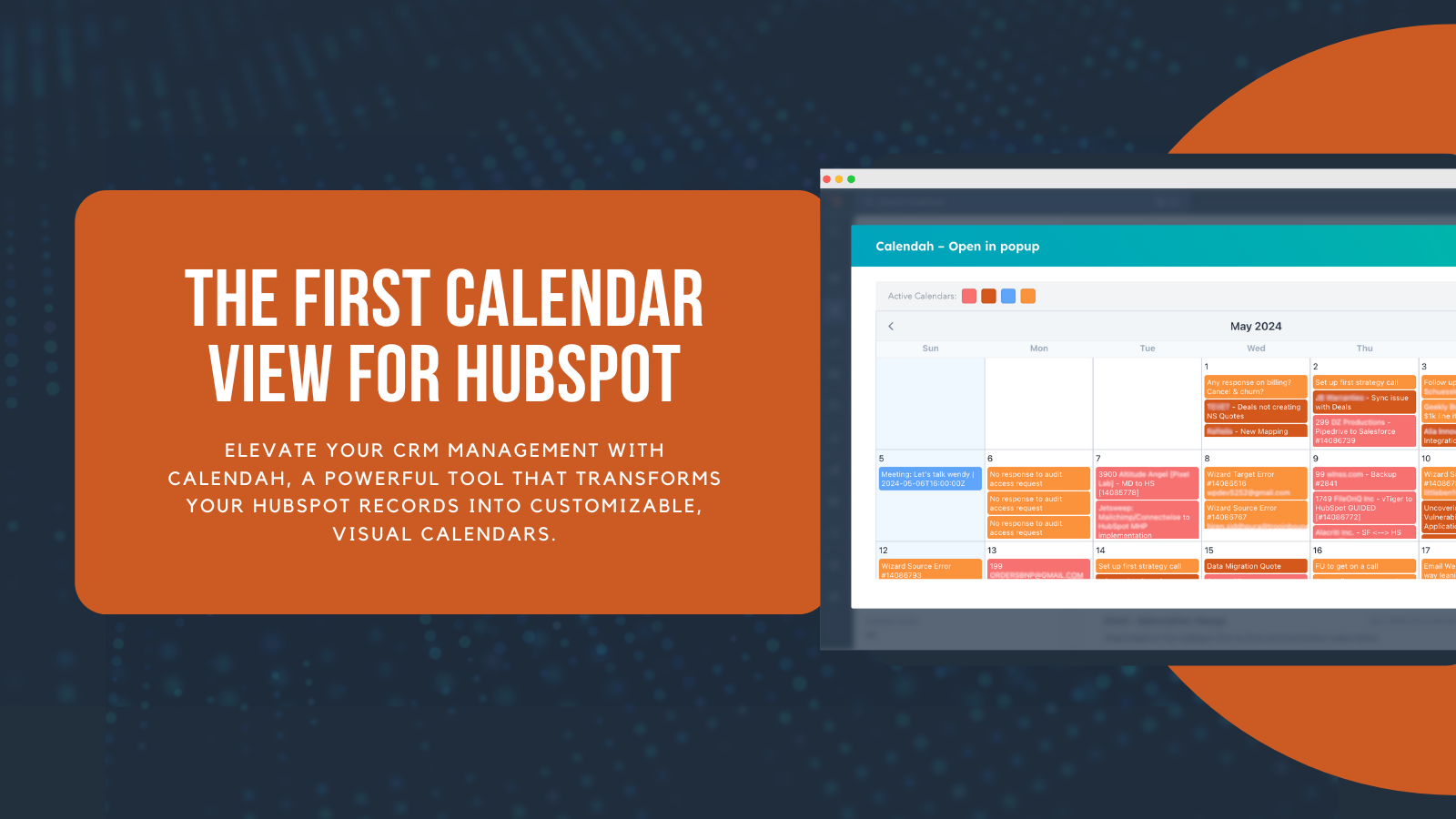Table of Content
- What is Salesforce Data Migration?
- Salesforce Data Migration: Key Challenges
- Putting a Plan in Place
- Manual vs. Automated Salesforce Data Migration: When to Choose Each
- Preparing Your Data: Cleaning and Mapping
- Choosing the Right Salesforce Migration Tool
- Salesforce Data Migration: 7 Secrets of the Smooth Switchover
- Data Security and Compliance During Migration
- Real-Life Case Study of Salesforce Data Migration
- Migration Made Easy: Partnering with Experts
What if I lose my data?
How will I ensure the data stays secure?
Will I have weeks of downtown for my business?
These and other reasons create uncertainty for businesses who avoid switching to a new CRM to avoid unknown issues and challenges.
However, CRM migration is an essential step to company growth and improvement. Thorough preparation can decrease the chance of pitfalls and ensure success. For some companies, Salesforce data migration is the next step to achieving business goals.
What is Salesforce Data Migration?
Salesforce data migration plan accomplishes moving data between systems or even between Salesforce orgs. However, transferring data from one system to another is not enough. It also entails maintaining the material's integrity, authenticity, and usefulness in a new setting. Since Salesforce as a system requires data to be scalable and flexible, how you handle the migration of this data will continue to determine which Salesforce functionalities your company uses to its advantage. The goal is to move the necessary data accurately while maintaining data integrity and relationships.
Salesforce Data Migration: Key Challenges
Migrating data to Salesforce isn’t just dragging and dropping files; it’s like planning a road trip across the country. Exciting? Absolutely. Tricky? You bet. Let’s break down the key challenges you’ll likely face—and how to navigate them without pulling your hair out.
1. Data duplication
One of the most common problems during Salesforce data migration steps is duplicate entries. These disparities might result in inaccurate reporting, inefficiencies, and poor user experience.
An extensive audit of your dataset is frequently necessary to identify duplication trends and address this.
Note: You can use an app like Koalify to handle duplicates in your HubSpot as a sample before migrating to Salesforce.
Understanding the underlying causes and why the duplicates exist is crucial. This enables procedures to be implemented that prevent duplication from occurring after migration, guaranteeing long-term data integrity.
2. Mapping data
A frequent problem with Salesforce migrations is incorrect data mapping, which results in either missing or insufficient information. The platform's functionality can be significantly impacted by poorly mapped data, which can postpone user adoption and system efficiency.
One of the first tasks is to extract your data into a structured SQL database and ensure that all of it is accurately mapped to the appropriate Salesforce fields. This approach lets you precisely map and configure your data to meet Salesforce's requirements.
Note: SyncMatters MigrateMyCRM is known as the best-in-class app with its AI-powered Mapping feature.
It is recommended that the completed data mapping be thoroughly reviewed line by line to identify any gaps or misalignments. This proactive strategy can help you make a smooth transition to the new system by identifying any problems with your data set before they can affect your Salesforce data or performance.
3. Inconsistent data structures and formats
Data stored in legacy systems frequently comes in forms or structures that Salesforce does not support. This may cause problems with data accuracy and compatibility and create barriers throughout the migration.
To comply with Salesforce's criteria, you should make sure that your data formats and structures are standardized and that you have formatted your old data accordingly. It is crucial to confirm the data's accuracy through manual validation.
In certain situations, custom validation workflows and transformation procedures might be necessary, especially when data formats are extremely complicated. As a result, even the most complex datasets could be seamlessly transferred into Salesforce without compromising functionality or data integrity.
4. Intricate data models
Salesforce deployments commonly use complex data models, such as items connected by lookups and junction objects. Migrating these complicated models without compromising the integrity of the data might be difficult.
The initial step would be to map out the relationships you now have in place, taking into account how complex they are. The integrity of these connections can then be preserved during the migration process by taking the required actions.
Intricate data models could be streamlined in more sophisticated situations by eliminating unnecessary object dependencies and complicated relationships. This would guarantee data integrity, increase system performance, lower maintenance requirements, and improve scalability.
5. Automated validation of data
One of the most time-consuming parts of a Salesforce migration is verifying that the migrated data complies with the established migration guidelines. This manual validation procedure, which can take several months, can delay the go-live date and raise project expenses.
However, this procedure can be significantly streamlined by using automated data validation, which compares the migrated data automatically to pre-established standards and criteria.
Putting a Plan in Place
As an industry-leading solution, Salesforce CRM provides compelling features and options for many businesses. But before you make a move, it’s critical to establish best practices.
The most typical issues arising as a result of a CRM switch include:
- insufficient communication between all the involved members;
- incomplete transferring policies;
- little data quality in the existing software;
- failure to optimize the information before the migration;
- skipping testing the system before the process.
It’s easy to prevent the phobia of migration mishaps by creating a plan and understand available tools to ensure successful data transfer.
Manual vs. Automated Salesforce Data Migration: When to Choose Each
Manual data migration in Salesforce involves manually transferring data from your current system to Salesforce. While it requires more effort and expertise, it can be a suitable option for smaller data sets or when automation tools aren't an option.
Advantages of Manual Salesforce Migration:
- Control: Complete oversight of every step ensures that your data is transferred exactly as you intend.
- Customized Mapping: Manually align fields, ensuring precision in transferring records to Salesforce.
- Selective Transfer: You can focus on specific data sets or records without needing additional customization tools.
- Avoids Overheads: There is no need to invest in automation tools or external services, which can reduce costs if your team has the skills.
Automated data migration takes the guesswork out of accuracy and provides advanced options to ensure accurate and secure transfer. An official Salesforce partner will import all your data along with relations you set up and migrate all pre-existing sales activity, preserved according to the mapped fields.

Advantages of an Automated Salesforce migration tool:
- Secure: a comprehensive set of practices, technologies, and policies to ensure your data is 100% safe.
- Automated: Faster data migrations to Salesforce, avoiding manual efforts and downtime for your business.
- Customized: Migrate any custom fields/modules and other data easily from your current software to Salesforce.
- Preserves Relations: Wizard automation maintains proper relations between the migrated data.
- Ease of Use: The Salesforce migration wizard will complete the necessary steps with a user-friendly and intuitive interface with just a few clicks.
- Detailed Data and Users Mapping: Effortlessly select the modules or/and users you want to migrate. This option allows total control of your data during the CRM import.
- Free Sample Import: A no-risk trial is available. Map a limited amount of your data to Salesforce. See the results of the migration and your data in the new CRM.
- Free Estimates: Get competitive pricing before you commit. View the actual quantity of records and estimate the total migration price.
|
Aspect |
Manual Salesforce Migration |
Automated Salesforce Migration |
|
Control |
Offers full control over the migration process. |
Guided by automated data migration tools but with customizable options. |
|
Ease of Use |
Requires in-depth technical expertise and hands-on effort. |
User-friendly interfaces with minimal technical expertise are needed. |
|
Speed |
Time-consuming, especially for large datasets. |
Fast and efficient, even for high volumes of data. |
|
Accuracy |
Prone to human errors during mapping and data transfer. |
High accuracy with error-checking features. |
|
Data Mapping |
Requires manual mapping of fields, which can be tedious. |
Automated mapping simplifies field alignment and relationships. |
|
Scalability |
Limited scalability; suitable only for small datasets. |
Handles large and complex datasets with ease. |
|
Customization |
Customization depends on manual adjustments and expertise. |
Supports complex custom fields/modules easily. |
|
Risk of Data Loss |
Higher risk without proper safeguards in place. |
Minimal risk with advanced safety features. |
|
Cost |
May save costs on tools but requires skilled staff. |
Higher upfront cost but reduces manual labor and long-term effort. |
When to Choose Each
Manual migration is ideal for small datasets when the data is minimal and straightforward, and you have skilled resources ready for hands-on management.
Automated migration is best for large, complex migrations requiring speed, reliability, and advanced customization options.
Preparing Your Data: Cleaning and Mapping
Before any data migration process in Salesforce begins, think of your data as a house you’re getting ready to sell—you wouldn’t invite buyers over before tidying up! The key is to clean, map, and organize your data so it’s Salesforce-ready. Let’s break it down.
Assessing data quality
Data quality is the foundation of a successful migration. You need to inspect it, fix any problems, and ensure that everything fits seamlessly.
Spotting the mess (Data inconsistencies and errors)
Start by putting on your detective hat and digging into your data. Hunt for:
- Misspellings: Is “California” sometimes spelled “Cali”? Fix it!
- Incomplete records: Blank fields or missing customer emails? It's time to chase those down.
- Incorrect formatting: ZIP codes in all different styles? Standardize them ASAP.
Implementing data cleansing strategies
- Once you’ve uncovered the mess, it’s time to clean house:
- Standardize formats (think consistent date formats or capitalization).
- Scrub out special characters that shouldn’t be there.
- Correct obvious mistakes, like typos in customer names.
Pro tip: Use data-cleaning tools or involve your team to double-check for human oversight.
Data mapping: The blueprint for migration
Think of the data mapping strategy as translating languages between systems—your migration could become chaotic without it.
Assign unique identifiers (IDs)
Ensure every record has a unique ID to avoid mix-ups during migration. For example:
- A customer ID should connect all customer-related records, like contracts or support tickets.
- Missing IDs? Pause and assign them before proceeding.
Understand the relationships
If your source system has connected data (e.g., customers tied to contracts or purchases), these relationships need to be preserved. Ensure related records in the new system have accurate cross-references.
Create a data mapping document
This document is your north star—it outlines how every source field aligns with its Salesforce counterpart. Questions to answer:
- Who owns this document? Assign someone to keep it updated.
- When will it be finalized? Don’t skip this deadline—it’s crucial for stakeholder review.
Data Cleansing: Polish Before the Move
Got your IDs in place and mapping handled? Excellent. Next up: some final data housekeeping.
Remove duplicates
Run a duplicate detection tool or manually comb through your records to spot:
- Duplicate accounts: Redundant contact information
- Eliminate outdated records: Data from customers who haven’t been active in years? Out-of-date addresses? If it doesn’t serve your current strategy, it’s probably better left behind.
- Fill in the gaps: Work with stakeholders to identify missing information, such as phone numbers, IDs, or email addresses. Document who is responsible for updating specific records and set clear deadlines.
Choosing the Right Salesforce Migration Tool
Selecting the right tool for the successful Salesforce data migration strategy ensures a smooth and hassle-free process. With so many options available, each boasting unique features and capabilities, it's essential to identify what matters most. Look for a tool that is intuitive and easy to use, allowing your team to start working confidently without a steep learning curve. Accurate data mapping is another key factor, as the ability to properly align fields and preserve data relationships is crucial for success.
Support for diverse data sources is also important. A good tool should seamlessly integrate with multiple systems to manage your entire dataset. Scalability is another consideration, as your data needs may grow in volume and complexity over time. Choosing a solution that evolves with your business ensures long-term efficiency.
When exploring migration tools, focus on those with a solid track record. Tools that have successfully handled past migrations received positive reviews, and offered robust support are more likely to deliver the desired results.
Why SyncMatters is your best choice for Salesforce data migration?
Migrating your data to Salesforce doesn’t have to be a headache. Choosing the right tool makes all the difference, and here’s why SyncMatters stands out:
- Intuitive dashboards and workflows simplify even complex migrations.
- Easily handle tricky data relationships to ensure seamless integration.
- Supports over 45 CRMs and countless data sources.
- Designed to grow with your business, from small migrations to enterprise-level needs.
- Expert guidance every step of the way for a stress-free process.
With SyncMatters, your Salesforce migration becomes efficient, reliable, and accurate. Get ready to start your journey the right way!
A few screenshots from the app to close look at its functionality and UI:


Salesforce Data Migration: 7 Secrets of the Smooth Switchover
Data transfer is more than merely moving from one CRM to another; several key aspects play a significant role in successful Salesforce migration:
1. Test CRM before the Switch
The first step to avoiding challenges is to test drive your data. Like many CRM vendors, Salesforce offers a free trial. Compare all the modules, functionality options, automation, and configuration choices. Get a feel for the system with familiar data to ensure the software fits your organization.
Furthermore, ensure the new system is configured correctly from the start. Set your trial up for success by setting your CRM up correctly. Your Salesforce onboarding specialist should be able to assist.
2. Perform Data Analysis
When was the last time you performed a health check on your data?
Manual input, clunky systems, employee turnover: all of these outside aspects can impact the accuracy of your data. To ensure you move over the best data, do a deep clean for relevancy and accuracy before migrating. Otherwise, the inconsistency, irrelevancy, and unnecessary items will migrate to your future CRM, creating challenges from the onset.
How do you clean up the mess? Decide what information to move from your existing CRM to Salesforce. For example, for an established business, the data may include old prospect details or past negotiations.
However, if your database contains historical information such as outdated appointments, completed meetings, or phone calls, these could be archived and considered closed.
With automated migration, it is possible to set criteria to filter records during the transfer. The majority of the organizations usually move by:
- date (setting a certain period)
- contact association (contacts connected to a particular user)
- relations to specific records (all the contacts related to tasks)
For the company owner or head of sales, who is well acquainted with business functionality, evaluating and identifying records should be a priority before making the switch.
3. Prepare Backup
Always, always create a backup to eliminate the risk of any information loss or file damage. During the migration, this is a critical step. Many CRMs offer the export of all info into CSV files. Check with your existing provider to verify your options.
4. Perform the Salesforce Data Migration with Trujay
Once the preparation is complete, proceed with the actual migration. With an automated option, the downtime to your business is usually minimal, if any.
- After you provide the future CRM details, the system will redirect you to the Salesforce account;
- With the Migration Wizard, click through to allow access to the data;
- This sync will prompt the app to initiate the following steps;
- Then, map fields and users;
- Verify fields are correctly mapped and run a free sample migration to explore the service in action.
When the sample or migration to your new Salesforce is complete, thoroughly check the results. Begin review and compare the current contact information with the migrated data. Explore if the relations between the contact and users, opportunities, accounts, or tasks are intact.
Most migrations conclude during a time frame where the existing and new CRM is active, allowing you to retain the data in its current form and continue to run your business.
5. Check Your Records After Migration
After completion, explore the correctness of your records and monitor the adherence to data entry and maintenance rules for the next couple of months. Salesforce offers the ability to organize your data into objects and records.
You can easily import the information into the platform using point-and-click tools through the platform’s standard setup already in use.
6. Setup Workflows and Integrations
One essential post-migration step is to fix the reporting tools and workflow rules/filters and begin configuration adjustments. Establish access permissions and provide security that avoids creating too many duplicates. Complete the integrations with third-party add-ons and mailboxes upon completing your Salesforce data migration to keep your two-way syncs intact.
7. Train Staff on New CRM
Employee adoption of the new system is the most complicated part of the implementation process; it can take a couple of months to use the solution to its full potential. Keeping employees in the know throughout the transition is essential.
Equip employees will all the needed information and tutorials and continue to onboard and implement team-training seminars.
Data Security and Compliance During Migration
Data security and compliance are critical when you migrate data to Salesforce. To avoid breaches and legal issues, sensitive information must be kept safe, and regulations such as GDPR, HIPAA, and CCPA must be followed.
Data is vulnerable during migration and can be exposed to unauthorized access or loss if not properly protected. Compliance ensures your organization meets legal requirements, avoiding fines and reputation damage.
SyncMatters guarantees that your data is safely transferred while adhering to all necessary legal and regulatory standards by employing secure migration tools, performing thorough testing, and maintaining stringent security measures.
Real-Life Case Study of Salesforce Data Migration

The Lewer Agency is an insurance and financial consulting firm based in Overland Park, Kansas. With a growing client base, they outgrew HubSpot’s capabilities and needed a more scalable and customizable CRM. Salesforce was the obvious choice, but this real-life case study migration required a meticulous approach to handle the intricate data and ensure compliance.
The Challenge
The migration project involved moving vast volumes of data, including detailed customer records, activities, and interactions, while preserving essential relationships between data points. The primary challenge was ensuring the migration didn’t disrupt ongoing operations or compromise data integrity. HubSpot’s data structure differed significantly from Salesforce, demanding precise mapping and customization to align with the new system.
The Solution
SyncMatters tackled the challenge of messy data by applying Salesforce data migration best practices like validation and deduplication rules, ensuring all records were accurate and structured. After this process, the data was re-imported to create an organized and reliable Salesforce database.
Handling complex data was another critical focus. HubSpot's "companies" and "deals" objects were restructured into three distinct record types to align with Salesforce's framework seamlessly.
To overcome the limitations of HubSpot's API, SyncMatters crafted custom solutions, including parsing deals directly from HubSpot’s interface. This innovative approach ensured accurate mapping and a flawless data transfer to Salesforce.
The Outcome
The migration was completed successfully, preserving data integrity, budget and ensuring minimal downtime. Salesforce’s advanced features have empowered The Lewer Agency with a more robust, scalable CRM, enabling streamlined workflows and better customer relationship management. Their team now enjoys enhanced reporting capabilities, improved data organization, and the tools needed to support ongoing growth and client satisfaction.
Migration Made Easy: Partnering with Experts
The data transfer process requires a clear strategy with appropriate preparation steps and action plans to ensure success. Overcome migration hurdles by following these key steps or consult a CRM migration expert to begin your checklist.





